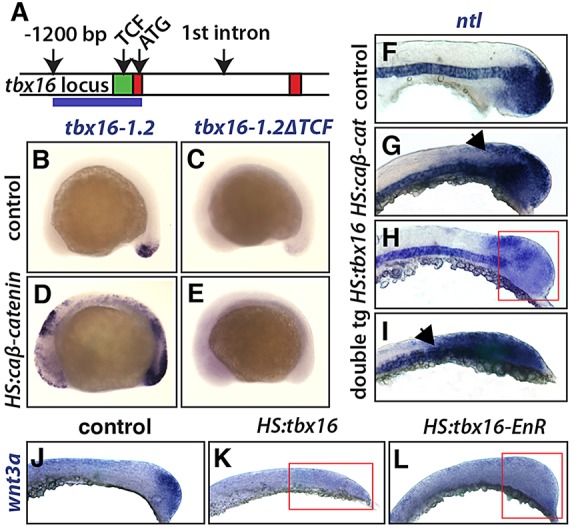Fig. 5.

Wnt drives tbx16 reporter expression and tbx16 represses Wnt. (A) The zebrafish tbx16 locus, showing exons 1 and 2 (red) and a conserved region of the tbx16 promoter (green), which contains two predicted TCF binding sites (see supplementary material Fig. S5). The blue line marks the region used for the tbx16-1.2 construct. (B-E) Whole-mount in situ hybridization shows reporter expression from the tbx16-1.2 transgene with HS:caβ-catenin (D) and in control (B). Another reporter line with mutations in both of the predicted TCF sites (tbx16-1.2ΔTCF) showed no expression with (E) or without (C) HS:caβ-catenin. (F-I) In situ hybridization shows wild-type ntl expression (F; n=22 embryos) and the changes in ntl expression after heat shock induction of HS:caβ-catenin (G; n=16 embryos), HS:tbx16 (H; n=11 embryos), and both transgenes (I; n=9 embryos). The arrows (G,I) highlight the expansion of ntl and the red box (H) highlights the reduction of ntl. (J-L) In situ hybridization shows wild-type wnt3a expression (J) and the loss of wnt3a expression after heat shock induction of HS:tbx16 (K) or HS:tbx16-EnR (L). Red boxes (K,L) highlight the reduction of wnt3a in the tailbud.
